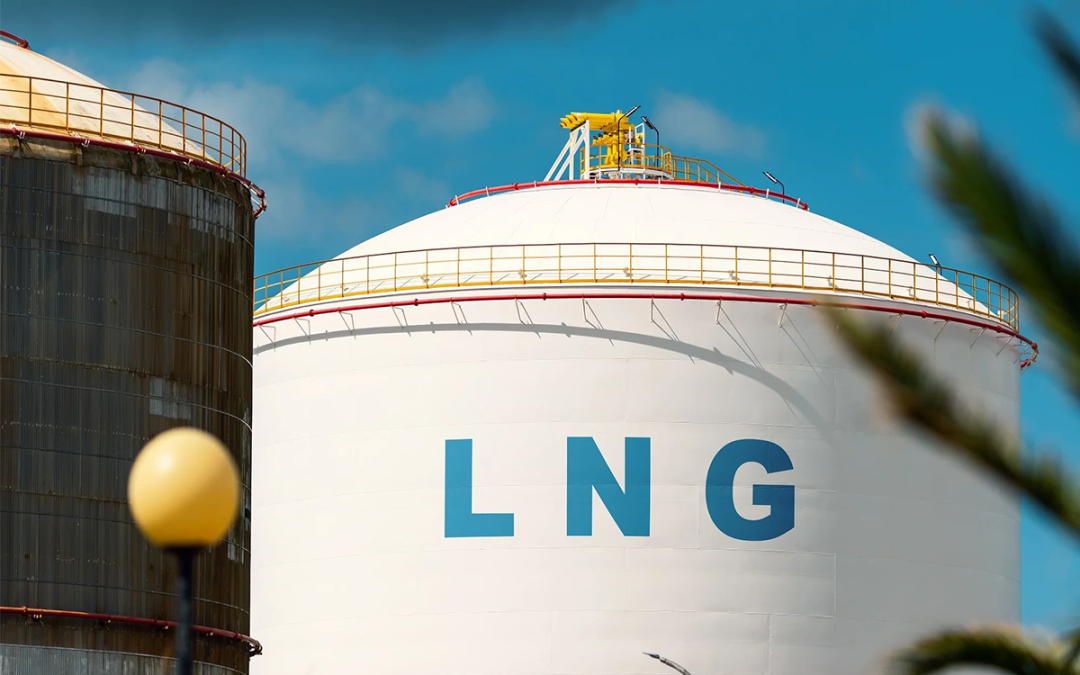Some Chinese state-owned and second-tier oil and gas companies have been looking to sell LNG cargoes for the January-February 2025 period to alleviate pressure from growing inventory and weak domestic demand, according to market participants.
The selling interest reflects expectations that regional heating demand is unlikely to surge as winter progresses, which would help lower spot Asian LNG prices, despite some demand for spot cargoes from Europe that would typically trigger price competition and tighten supply.
“We did hear of some players selling spot LNG. They are definitely making some profit, as the cost of the cargoes is lower than their own term contracts or a previous buying spree,” a trade source said.
Opportunistic Chinese LNG importers have previously sold LNG purchased under relatively cheaper oil-indexed contracts at higher spot prices. Platts assessed JKM — the benchmark price reflecting LNG delivered to Northeast Asia — for January at $14.983/MMBtu on Dec. 5, while oil-indexed LNG is likely to cost around $11-$12/MMBtu, based on current oil prices of around $75/b.
Not all national oil and gas companies were selling, as they have a government mandate to secure winter supply for energy security and would face scrutiny. However, second-tier gas companies were reportedly quite active. Other Chinese LNG importers selling cargoes were optimizing their January-February portfolios, traders said.
“Currently, supply in China exceeds demand, and it makes sense that Chinese players are selling cargoes in the spot market to capitalize on stronger spot prices. We are monitoring the positions of Chinese NOCs, especially the major supplier in the south, to understand regional supply and plan our strategies for the upcoming year,” a second Chinese trade source said.
“The recent cold weather was too short to stimulate additional demand. In previous years, we would typically observe a significant reduction in inventory and some price movement during cold spells,” a third trade source said.
One of the Chinese NOCs sent out a message last week saying that there is ample inventory in both north and south China. Some domestic importers have also sought to sell cargoes arriving over January-March 2025 to relieve inventory pressure, a fourth trade source said.
Saturated market
However, mild winter weather has also suppressed demand in other Northeast Asian regions, including Japan and South Korea, complicating efforts by Chinese companies to resell or optimize their LNG positions. This has exerted additional downward pressure on prices.
“Quite a lot of second tiers are checking prices and looking to sell their term contract volumes in the spot market, but not many trades were done because it is difficult to get buyers,” another trade source said.
“Literally no one would buy now except trading houses. Only one to two cargoes were sold last week by the second tiers for January deliveries,” the source added.
“We also have no plans to sell in the spot market, as demand is too weak. Japan only had demand for one or two cargoes, and we weren’t invited to participate in the tender,” another trade source said.
Other Chinese market participants were seeking prompt cargoes for December delivery, indicating preparations for winter demand sooner rather than later in the season.
“Demand is still on the weaker side, and we have enough inventory. If there is another cold snap that is long enough, we may need to come out to buy a few spot cargoes,” a source with an NOC said.
“We are still actively monitoring the situation, and if Chinese buyers have the need to make any purchases, we may see some activity around mid-December,” a second-tier gas company said.
Domestic market
Chinese LNG importers are also struggling to sell surplus gas in the domestic market, as a lack of demand has pushed prices below breakeven levels, making it difficult for spot LNG to compete profitably with local sources.
China prepared for the heating season by instructing domestic gas suppliers to fill storage before winter, and large-scale centralized district heating in northern China began Nov. 15. However, no cold wave has materialized, and average temperatures in many areas are above normal.
Trucked LNG prices at China’s 107 LNG receiving terminals and inland plants averaged Yuan 4,641/mt ($10.5/MMBtu) in November, down 16% year over year and 9% from October, data from gas distributor ENN showed. These prices, an indicator of unregulated marginal LNG sold in China, are lower than November LNG imports at around $12/MMBtu, meaning sales would need to be above Yuan 5,200/mt to achieve breakeven level.
“Trucked LNG prices continued to fall due to challenges in distributing stocks and very weak downstream demand, significantly lower than usual winter rates,” a China-based market participant said.
“With the Lunar New Year occurring at the end of January, we expect a delayed recovery in demand, as factories may resume operations later due to prevailing weak macroeconomic conditions,” a trader said.
Source: Platts





